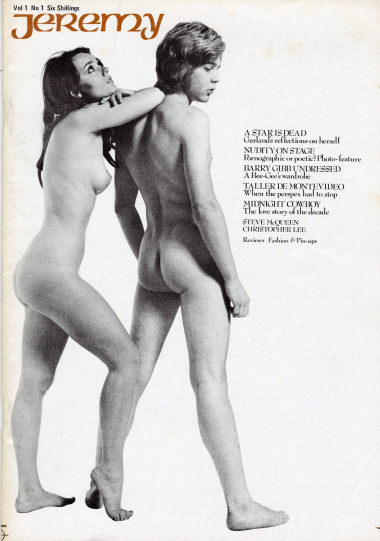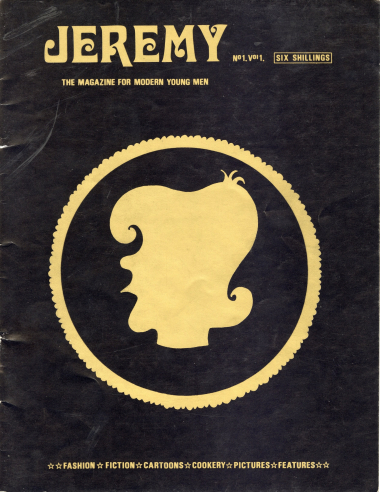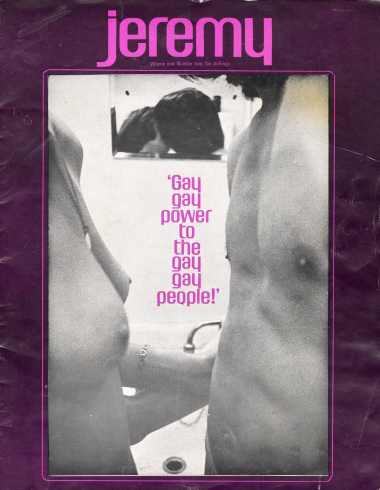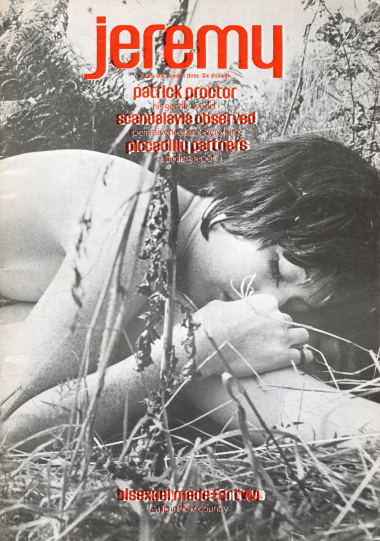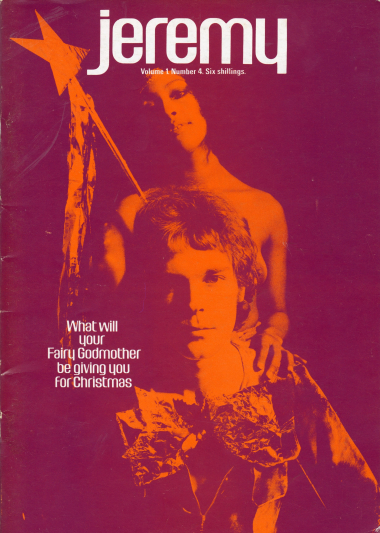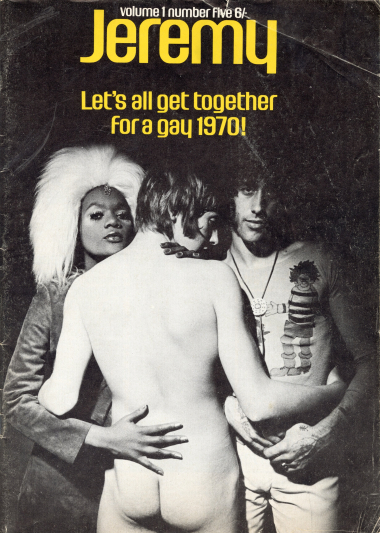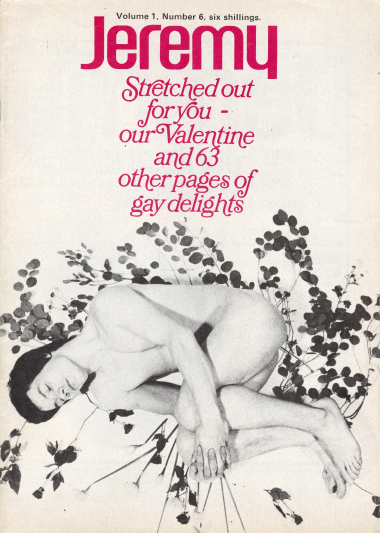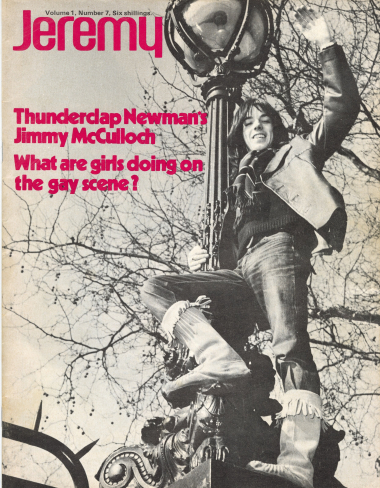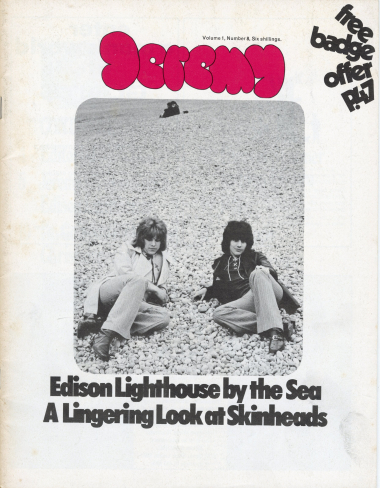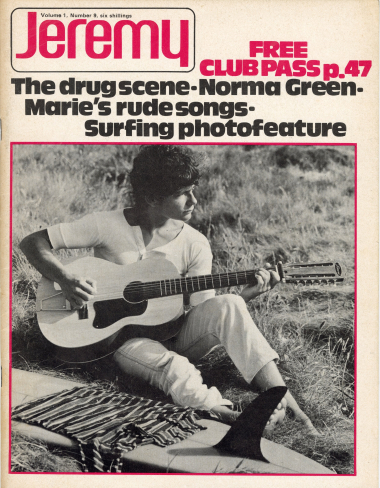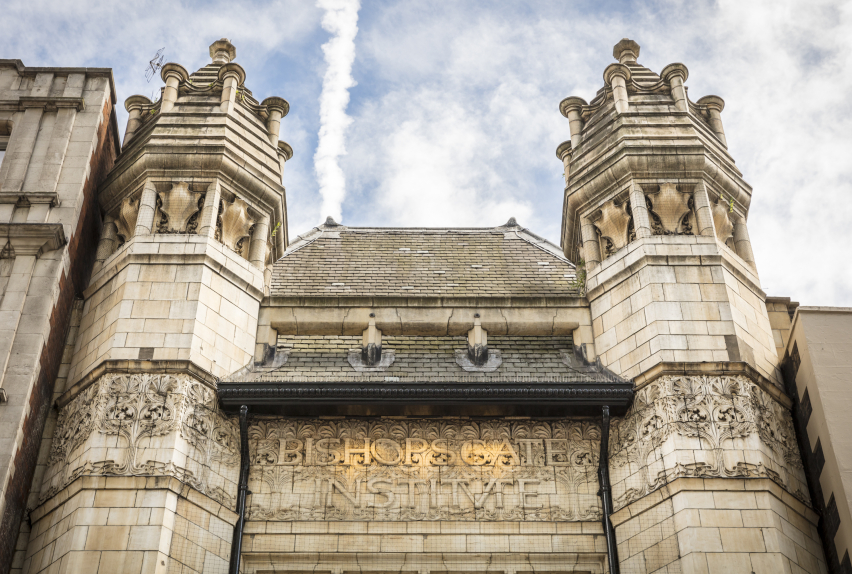Jeremy Magazine: A Look Into Gay Life in the UK
Written by Ashleigh Craig, Middlesex University Placement, February 2024
Jeremy magazine was a Gay lifestyle magazine that was started at the tail end of 1969. As stated in the fourth issue in a response to a Sunday Times article, they were “not justfor homosexuals and [they] never said it was.” They state that they are just against the assumption made by so many magazines of the time that all men are interested in “fast cars, fast horses and fast ladies with big breasts.”
The pages of Jeremy are filled with interviews with a myriad of different celebrities of the time, such as David Bowie (issue 6) and Ian McKellen (issue 4, before he officially came out), articles on upcoming fashion trends and self-grooming tips, short-stories, and reviews of films, books, theatre productions, and music, alongside articles on gay life in the UK. An advertisement for their own “Jeremy Fundies” and “Jeremy Wigs” can also be found in most issues, with the magazine using it as a way to raise extra funds. However, the “Gay Guides” section allowed for readers to learn where the best clubs and bars were, mostly in London, but they would sometimes feature travel trips for the gay individual travelling abroad.
Their efforts to educate their readers should also be highlighted; in issue 5, the magazine dedicates an article to the simplification of The Sexual Offenders Act of 1967. This was one of the few instances of Jeremy working alongside The Albany Trust, with this article being critical for their readers to navigate an arguably ridiculous law that made it illegal for anyone under the age of 21 to engage in sexual acts with the same sex - despite the age of consent in the UK at the time being 16 for heterosexual individuals.
I took some time reading through the articles of the 10 issues found at the Bishopsgate Institute, and noted down anything that stuck with me that I think is worth highlighting.
Stonewall and Gay Liberation
“Gays of the world unite! And take inspiration from the new militance that has been stirring in America this summer!” is the subheading found in the second issue, that was published around the autumn of 1969. The article (taken from The New York Review of Sex) goes on to retell the events of a rally taking place in Washington Square Park in New York, following the events of Stonewall.
In a time where news wasn’t instant, and news outlets were likely not reporting Queer matters in a positive light, I can imagine being a reader of Jeremy at the time, and appreciating such a retelling of the effort made for gay rights. Although progress had started to be made in the UK by 1969, it was not enough, and with the restrictions being put in place against trans individuals today, it still is not enough. However, reading through the article, it’s easy to emphasise with those at the time; the feeling that they can make a change if they rally together to demand to be treated better by governments and society as a whole.
Not Just for Gay Men
Going into reading Jeremy, I did not expect to see any mention of women and bisexuality at all; after all, it was a magazine intended for young men. However, bisexuality often appeared in the advice column, with readers asking how to meet people and how to deal with sudden feelings of attraction to an additional gender. Jeremy even dedicated the front cover and main photostory to bisexuality in issue 3, entitled “On a Bisexual Made for Two”.
They even featured articles written by a woman called Jan Smith (“Girls Suffer Too From Portnoy’s Complaint" in issue 2, and “The Unkindest Cut of All” in issue 4), and her own sexual experiences. An article was published in issue 7 dedicated to the “Girls on the Gay Scene”. In this article we meet two women who frequented the gay clubs and bars in London; 21-year-old Iris, a lesbian from Bethnal Green, and 22-year-old Pam from Epping Forest. Though Pam had not had any “lesbian experiences”, in her interview she states that her dad is queer and her brother is gay. The article further dives into their own experiences in the scene, their own partners, and friends they’ve made.
A key insight I found to be of the gay scene at the time can be found when discussing what would become of Pam; “Her slightly odd family background might mean she’s carrying on a kind of tradition and will suddenly settle down and marry one of her gay boys.” which forces me to wonder how often gay people at the time would ignore their sexuality, and choose instead to marry and have children? And was Pam’s situation common? Did a number of gay individuals make their sexuality known to their partners, or was it a secret they kept under wraps?
Rent Boys and Relationships
Although it should not be taken as a universal experience, the times in which Jeremy brings up relationships can give us an idea of what the world of gay relationships was in the late 1960s. However, it should be noted that it may not necessarily be a happy one. Jeremy dedicated two articles across issues 3 and 4 to report on the lives of “Rent Boys”, where they discussed the lives of gay male escorts in London. They go into detail on how they started their jobs, their wages, and their clientele. We additionally see the discussion of relationships come up in issue 6’s editorial “Sex and Morality”, which features the transcript of a lecture given by Antony Grey (director of The Albany Trust), and a quiz found in issue 3 that tests “how good of a lover” the reader is.
It is through these articles that we can gauge an understanding of the standards at the time. At least by the journalists at Jeremy’s standards. The quiz features questions such as “Your boyfriend spends a night with someone else; should you then feel free to do the same?” before going on to tell the reader, “Yes, only for well-balanced friends; spite’s the wrong reason”. As easy as it is to generalise that in the late ‘60s to early ‘70s, casual sexual relationships were fairly common in the gay scene, it is also difficult to blame them. When they had very little option in the way of marriage (let alone starting a family), we can sympathise with how difficult it would be to find the balance between embracing who they were, and any potential internalised homophobia, with Antony Gray even suggesting that loneliness was something many homosexuals struggled with at the time.
Concerns in the Community, 55 Years On
Articles in Jeremy suggest struggles within the community that have not necessarily gone away. Issues with substance abuse, and mental health struggles are factors that remain to be cause of concern today, just as much as it was in 1969 and 1970.
In issue 9, we can find an article entitled “Facts about Drug Misuse” which informs the reader on different types of drugs, their effects, and any potential addiction that can be developed as a result. When we look at the history of the gay scene in numerous cities, they have almost always been relegated to hiding away in bars and clubs, something that still holds true to this day. With alcohol being the centre of clubs and bars, it’s no wonder substance abuse was so frequent.
The article “Girls on the Gay Scene” also highlights issues plaguing the queer community at the time. In her interview, Pam shares about how she knows a “junkie queen”, stating that those who knew him “expect him to die any minute”. Suicide is often brought up in this article, with Iris being quoted saying “I suppose one day I’ll stop doing all this but I don’t know when, can’t see it coming, perhaps I’ll kill myself. I don’t think anybody grows up on the gay scene… at all..” which gives us an insight into a sadness that is echoed in the last section when Pam is discussing what happens to older girls on the scene. “They can’t all commit suicide.”
It’s in these words that we have an understanding of some members of the scene. With society forcing them into being outcasts, suicide likely seemed like a normal way out. We can see how dying young seems to be so common in the community, with so many losing their lives during the AIDs epidemic, to the modern day where there is still an increased danger to the lives of so many in the community, especially with Trans individuals. All of which are issues that don’t seem like they’re necessarily getting better yet.
Conclusion
Jeremy was not a magazine I had heard of before my perouse through its issues, and I’m saddened by the fact that a magazine that is such a fantastic time capsule of gay life at such a pivotal moment of queer history has fallen into obscurity. The articles were insightful, and the advice and “Gay Guide” sections help shed a light on how people navigated the scene before the internet, showing us how communities were formed. I’m unsure of how big of a place Jeremy had in the gay scene at the time, or its lasting legacy, but with so much Queer History relying on oral retelling for so long, having a gay magazine that can show us even a little bit of life for those in the LGBTQ+ community in the UK feels like a treasure worth holding onto.
